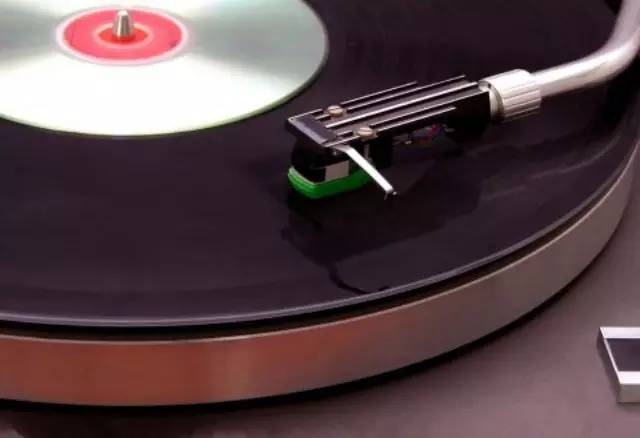
Two physicists read out the sound from an old record through a microscope. do you want to hear what it looks like?
record is a very nostalgic thing. Put it on the phonograph, put on the stylus, and the music will be played along with the rotation of the record.
it was the Frenchman É douard-L é on Scott de Martinville who first recorded waveforms of sound vibrations, but at that time they could not be played.
the waveform at that time looks like this:
later, Edison invented the phonograph, which recorded the track with grooves of different depths in the wax tube, and then the stylus vibrated as it moved, restoring the sound. And then, there was the kind of record we're talking about now.
what is the sound track on the record? How does it make the stylus vibrate? Just take a look at the following micrograph:
however, in addition to storing a small amount of audio, there is also a fatal problem with the way they are played, which can lead to wear and tear. And the storage medium is not that durable. Many antique records preserved today have been worn or even completely broken, and the wax canister cannot be preserved. Libraries and other units will convert the precious records that can still be played into digital format as much as possible, but what about those parts that have been damaged and cannot be played?
surprisingly, the solution to this problem is provided by two physicists working at the LHC (large Hadron Collider). In their laboratory, there happens to be a high-precision optical microscope, which is used to scan the old record and get the image of the "sound track". After computer processing, the sound can be restored.
the picture above, on the far right, is the record "track" picture obtained through the microscope.
with the help of the Library of Congress, physicists have also set up an IRENE project to help restore precious audio materials sleeping in shabby old records.
next, let's listen to the work of this project team. This is an audio clip by Alexander Graham Bell, a famous scientist and inventor, which was recorded on a waxy disk in 1885. The disc was broken, and with the help of the microscope, Bell's voice was able to reappear a hundred years later.
as for the content of this audio, it actually sounds like a test audio: the first is counting, and then Bell says, "take this as proof-my voice." Alexander Graham Bell (In witness whereof,hear my voice, Alexander Graham Bell)
read the original text to learn more. This is also a good example of the application of high and new technology. Physicists have inadvertently helped the library.
Searching for an outstanding modest 8th grade graduation dresses to dazzle your friends? Available now are silhouette and variety of styles.
by the way, the team cracked the top waveform that couldn't be played at all in the first place! Its content is actually a French song, reading the original article has the corresponding audio, if you are interested, you can listen to it. However, we still have to be psychologically prepared, the distortion of the "recording equipment" at that time is still very serious, so it will not be very pleasant. But being able to read it is already very good.)